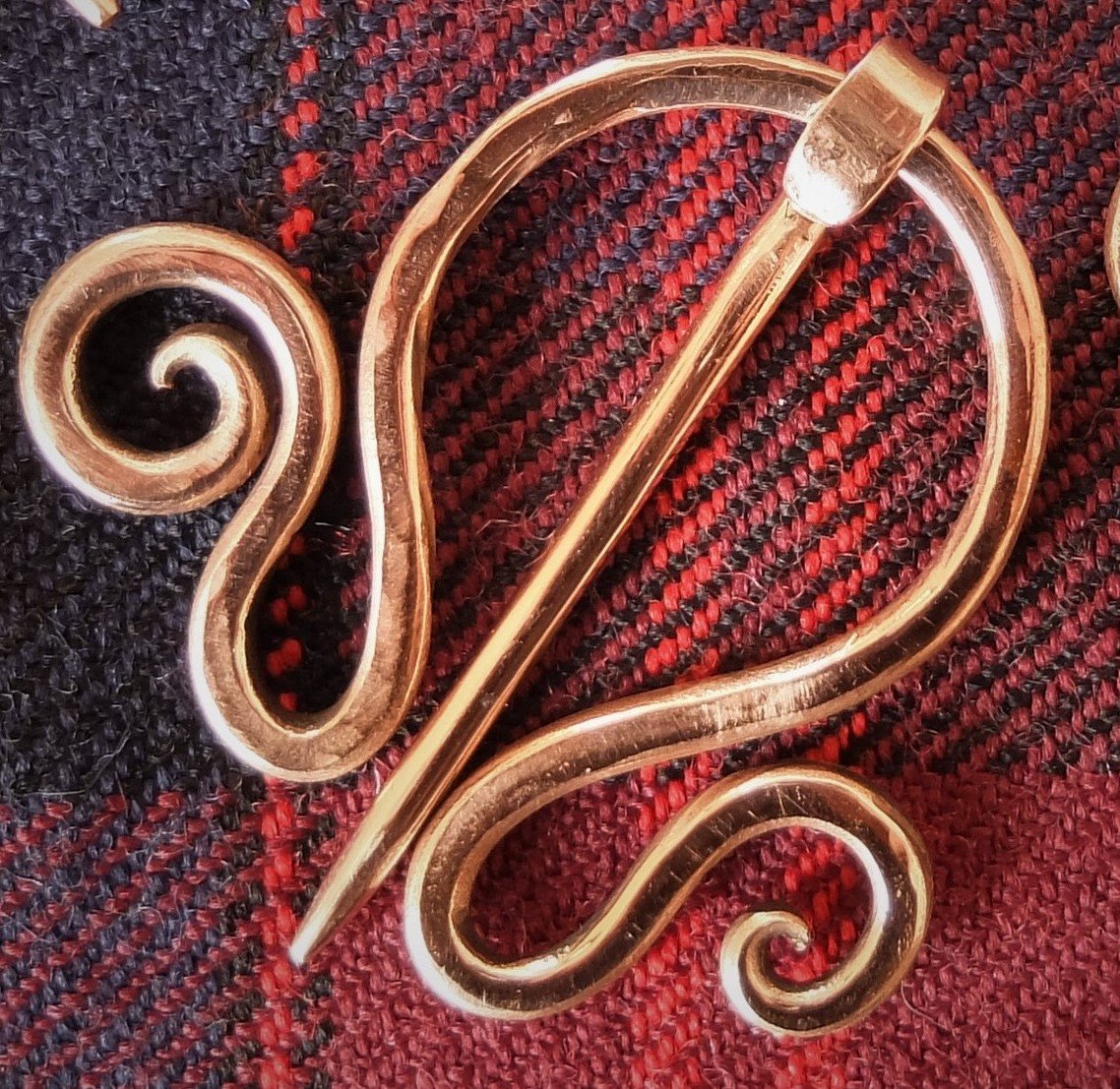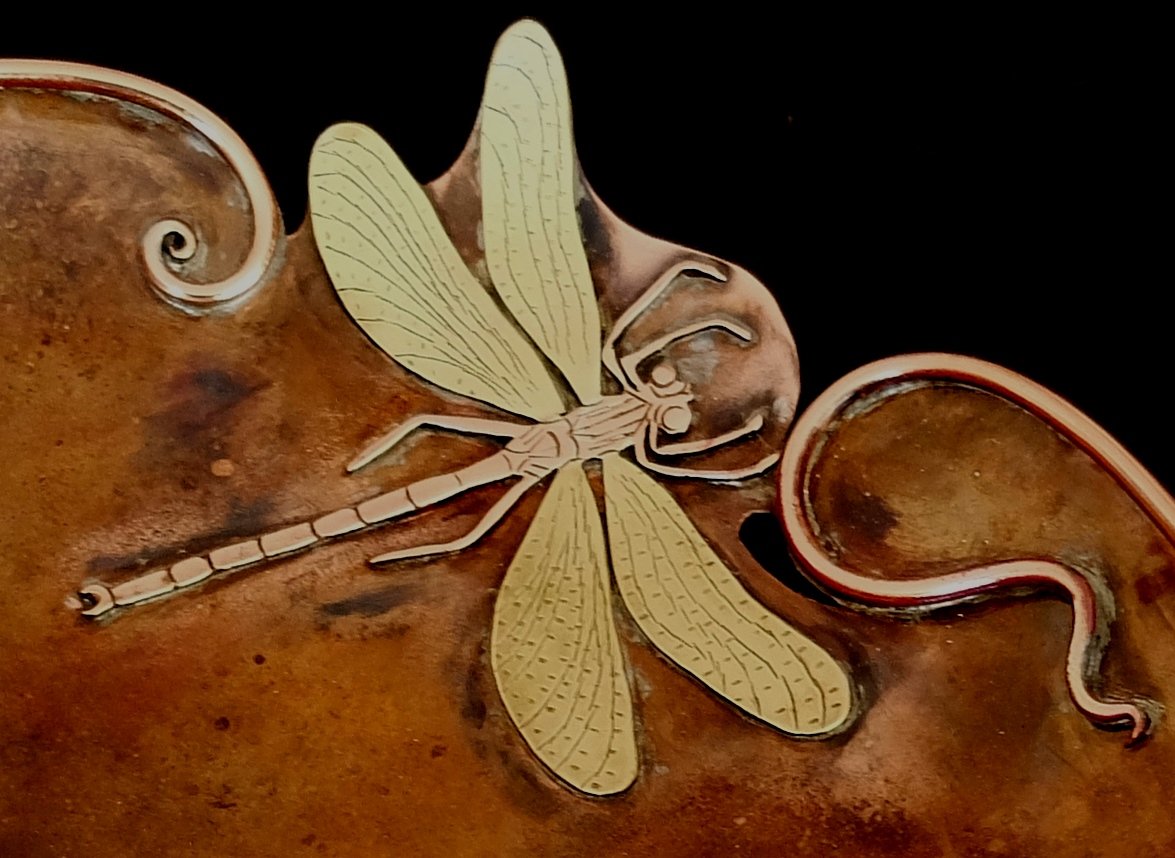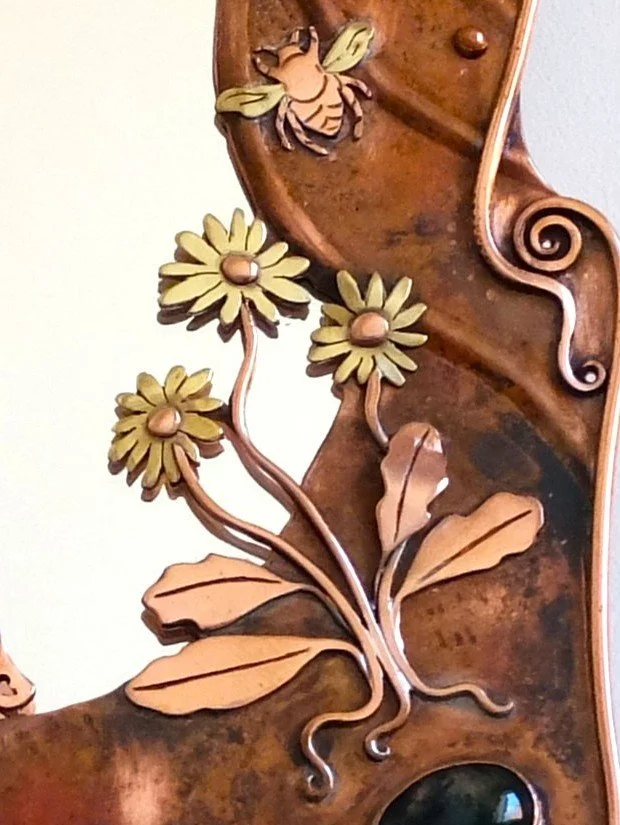Coppersmithing and Giants
‘The sweet spot between physics and art’: a guest post from one of few working coppersmiths in the UK, Siân Evans.
I began my apprenticeship in 1991, in an old forge near Pevensey Castle, under the supervision of coppersmith, Sam Fanaroff. Over the following four years I was taught how to make bespoke copper items (such as mirrors, vases, bowls and boxes), carry out cleaning and restoration work for the antique trade and religious communities, and undertake commissions for private individuals. I became proficient in forming objects from sheet metal, riveting, soldering, setting stones, and creating intricate wirework. Designs were often inspired by twentieth century Arts and Crafts aesthetics, incorporating visual elements from the natural world. Aside from breaks to raise my four children, I have worked as a coppersmith ever since.
Siân as an apprentice in 1991.
The art of metalworking often carries a sense of mystique, and even those of us who are not superstitious can feel deeply affected by the process of smithing. For me, the act of working metal resides in the sweet spot where art and physics meet, informed by a dialogue between maker and material that can span a lifetime. It is elemental – the metal object bringing together minerals from the earth, air and flame, before finally being quenched in water – and this surely goes some way to explaining the smith’s long association with magic and legend. The sword in the stone is a description of bronze casting, whilst Jason’s golden fleece is a half-remembered process of retrieving alluvial gold from rivers. Despite myself, I was indeed flattered when Sam explained that I was accomplished enough to have an inverted horseshoe pointing down over my hearth – unlucky for anyone who is not a smith.
A penannular brooch
However, the legends surrounding smithing rarely include female metalworkers, who are not only absent from legends but also rarely considered in the examination of archaeometallurgy. Mindful of this, I returned to university in my fifties to discover female smiths in the historical record and I recently graduated with a PhD in archaeology. I think that our sense of the origins of metallurgy is skewed through the gendered lens of industrialisation. There is much evidence that ancient metalworking was a family and community event, understood in a similar way to early arable practices. I believe that smelting, casting and smithing can be understood as a seasonal counterpart to farming, taking place in the dark months, when the welcome warmth and focus of the fire could become a place where stories were told and legends created.
A dragonfly
Coppersmithing is listed on the Red List of Endangered Crafts and my sense of responsibility to perpetuate my skills is acute. In 2019 I represented GB in Uzbekistan at UNESCO’s First International Festival of Handcrafts, and saw how craft skills can be vital living expressions of community and identity. Now that the UK has ratified UNESCO’s Convention for Safeguarding Intangible Cultural Heritage I am seeking meaningful ways to contribute to this project.
Detail on a copper mirror
A general sense of belonging, through making and participation is no more evident than in my hometown of Hastings, where traditions derived from seafaring and fishing are maintained and festivals mark the seasons. My involvement with the May Day Jack in the Green events began over thirty years ago through my friendship with Hastings giant builder, Derek Binns. His original giant, Hannah Clarke, has recently been restored and is now being carried by the next generation, proof – should it be needed – that traditions do not survive when cloaked in nostalgia, but rather by being paid forward with kindness and time, and the same is true for endangered crafts like my own.
To learn more about Siân, her work and her research, please visit her website here and her Linktree here.




